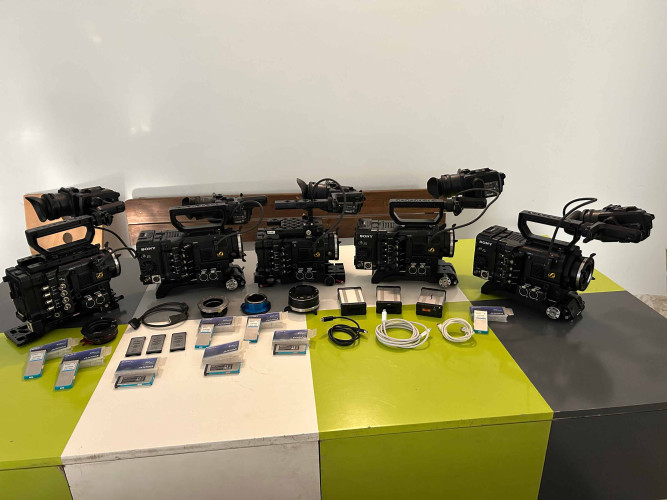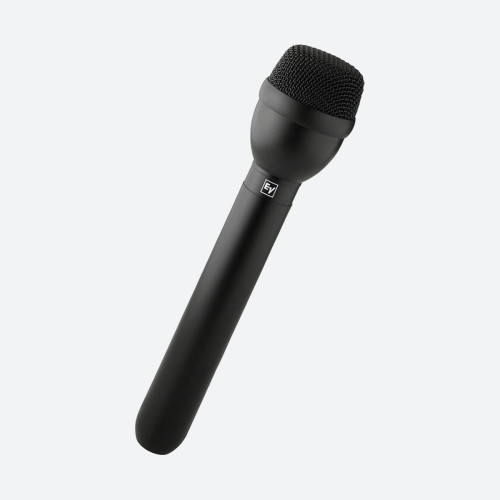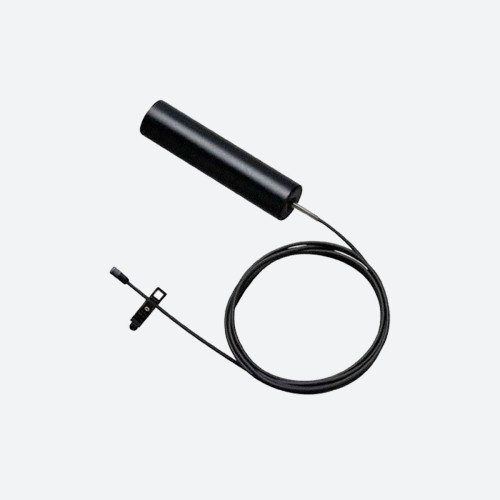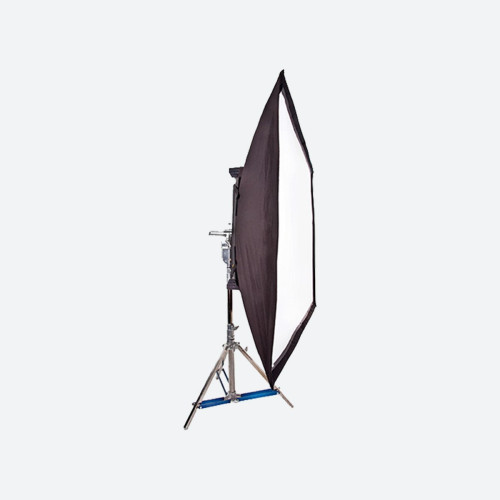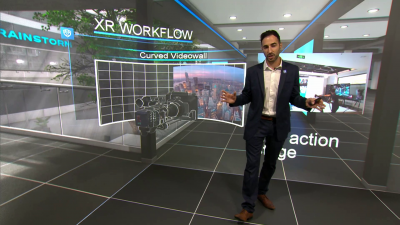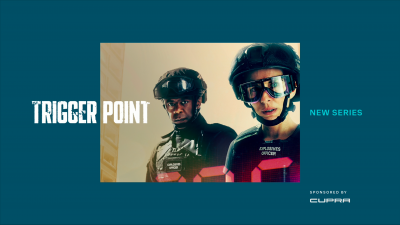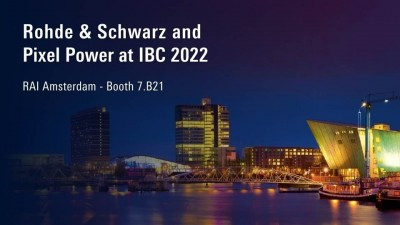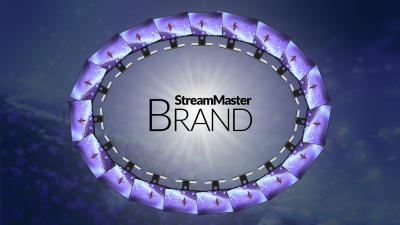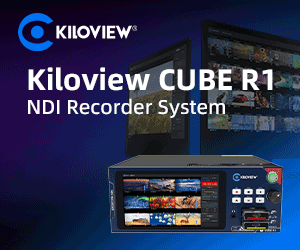A brief history of television graphics
Author: Dennis Lennie
Published 1st October 2008
Thirty years ago, television captions were routinely created by sticking white Letraset characters onto black card. Credit rolls were possible using special devices which used long strips of black material onto which the Letraset was stuck, and which were literally rolled, either by an electric motor but sometimes even by hand.
There were, of course, a whole bunch of disadvantages in such a system, both obvious and perhaps less obvious. First, you needed people to do it: people you could trust to check the spelling and achieve a balanced layout, but who were stuck with a very boring and unfulfilling job.
Second, you had to allocate one or more cameras to view them, and a precious effects bank in the switcher. These were the days when a studio would never have more than four cameras and a lot of programming was live, so this was a serious imposition.
The caption cards were usually stacked on a music stand, and someone had to stand there and remove them when they had been used. You simply superimposed the output of the caption camera – white letters on a black background – on top of the picture (you still here some old school directors calling for “the super” – that is where the expression comes from). If you wanted multiple captions, you either used more than one camera or you had to keep switching the caption camera on and off.
Those of you with very long memories may remember the original UK wobbly-set soap opera Crossroads. This made an effect of its end credits, having them flying in and out in turn from top, sides and bottom: done with two cameras panning and tilting.
So there were real pressures on the industry to come up with an electronic replacement. While the first device in service was probably the Riley character generator, developed in association with the BBC, the real honour for pioneering commercial success must go to Aston in the UK and Chyron in the US.
The honour takes the practical form of becoming generic trademarks. You still find people trying to hire an “Aston operator” (or, in America, a “Chyron operator”), even when they will actually be driving a Pixel Power Clarity (or one of the many other character generators now available).
These early character generators were fairly simple devices, being effectively just a replacement for the Letraset and card by producing white letters on a black background to be superimposed onto the picture. Indeed, the quality of text was arguably worse, as at this time there was no anti-aliasing of the characters.
In this case, aliasing is the jagged appearance of lines on a television screen which are not perfectly horizontal or vertical. What should look like a straight edge is rendered as a series of steps by the line structure of the television screen. Add in interlacing and it means that curves and angled lines will appear to crawl as well as look rough, particularly in relatively small fonts. Get the font size really wrong and you could end up with moir patterns.
Anti-aliasing minimises this effect by cheating the eye. It smudges the difference between the two fields of the interlaced frame. If you look closely it means that the edges of diagonal lines look soft, but from normal viewing distances it minimises the jagged steps and reduces other problems.
Anti-aliasing was one of the developments that reached the character generator market by the late 1980s, at around the time that we founded Pixel Power to bring a new approach to the technology. We saw that the market was now beginning to demand more than just electronic Letraset, including a good approach to anti-aliasing and a much broader choice of fonts.
There was also a requirement for more than just static captions: rolls and crawls were also added, by us and by our competition at the end of the 80s.
This period also saw the first attempts at 3D character generators, bringing a greater range of animation to captions. Names like Floating Point, the Quantel Cipher and the Ampex Alex led the way in 3D. If these products do not sound familiar to you do not be surprised: they were all short-lived because practical, workable 3D graphics were beyond the technology of the day.
Character generators were black boxes at this time, using bespoke hardware. Processing power was such that layouts had to be rendered before they could be used, and extended animated sequences were impossible because of memory limitations.
The user interfaces also tended to be rather less intuitive than we would expect today, and operators needed an extended period of training. That was actually a major obstacle in the wider use of character generators: there was a shortage of well-trained operators, and once trained on the preferred machine, they tended to resist moving to another manufacturer and another user interface.
Interestingly, although character generators are now much easier to use, the availability of operators can still be an issue, particularly in high pressure areas like live sports. And they are still often called “Aston operators”, even though the chances are they are operating something else.
If the 80s were characterised by the drive for good quality text, in the 90s the character generator started to become more than just a caption device. Pixel Power, and Dubner in the USA, led this movement, adding a stills store and paint tools alongside the keyboard.
Broadcasters were initially resistant to this concept: they were mindful of the pressure to get the captions right in live transmissions, and were reluctant to add more to the operator’s arsenal. But in linear post production the idea was taken up much more readily, and that was certainly where our company found its first big successes.
The other big change which started in the mid-90s was a shift away from dedicated hardware to Microsoft Windows-based hybrid systems. The benefits include the ease of swapping files, allowing you to bring in to the character generator something you have created elsewhere: a logo from Illustrator or PhotoShop, for example. In the old days, anything that came out of a character generator had to be created in that character generator. Now designers can use the best tool for the job.
It also enabled the use of standardised, low cost fonts, giving the designer much more creativity without having to persuade a producer to make a big investment in electronic type. Different character sets could be accessed simply by swapping fonts, giving the character generator multi-lingual capabilities for the first time.
The downside was again, reluctance on the part of broadcasters looking for equipment to use in a live broadcast. Windows, they argued, has been known to crash: would a hybrid system be robust enough, they asked.
Today, that transition is complete. You cannot now buy a character generator that relies entirely on bespoke hardware and software.
The same trend – adding functionality on a standard computing platform – has led to the virtual demise of the dedicated character generator in post production. Excellent text functionality is now available either as a standard function within the editing software, or as a low-cost plug-in from firms like Boris.
But if character generators are now never seen in post, that has been countered by a massive rise in their numbers in master control. The multi-channel world has created a whole new television science/art: channel branding.
And where that once meant just a simple bug inserter, now there is a call for much more sophisticated devices, creating sophisticated branding sequences designed to keep the viewer’s finger off the remote and waiting for what comes next.
Television purists will bemoan this as it has led to one of the blights of today’s broadcasting (they would argue): the credit squeezeback, wrapping the branding in multiple windows around the end of the programme. Infuriating if you actually want to read the credits, but seen by broadcasters as a powerful way of retaining viewers without reducing the amount of commercial time they can sell.
Again, it has been the developers of character generators who have made this possible. Tools like the Pixel Power Clarity now include a 2D DVE with multiple planes, which in transmission can be used for squeezebacks and to create other branding sequences.
We have already seen that stills stores were added to the character generator: now it is routine to have a video clip store too, and separate functionality for audio, to store and replay voiceovers in branding applications. In large playout centres you may be sending the same content to multiple countries, so now you need to have a number of audio stores for voiceovers in different languages.
And all of this must be done in HD, which means surround sound. At Pixel Power we have now implemented Dolby Digital 5.1 in the audio section of the Clarity, which means we can de-embed the surround sound from the incoming programme, dip it, add the appropriate voiceover then re-encode it, keeping everything in sync with constant latency through the system.
Once you sit down to design a squeezeback branding system for a typical large multinational playout centre, you realise that it would need a surprisingly large number of boxes if it were not all implemented inside what was once a humble text device, the character generator.
This sort of application clearly calls for a great deal of automation. Content has been automated for a while, and now we are seeing automated playout, working with a transmission automation system to create the right captions and content.
The ultimate is a system we developed in association with Red Bee Media for BBC World, where a network of character generators talks to the scheduling computer to know what programmes are coming up, then automatically creates suitable branding and promotional sequences to fill the gaps. So if the next programme is about the business world, it might build a set of stock market prices or exchange rates, interrogating external sources as necessary. All the playout automation needs to do is notify the character generator that it needs a 30 second sequence in the next junction, then cue it.
Not all applications are automated, though. I have mentioned live sports broadcasting a couple of times already, because it is one of the most demanding jobs for both the character generator and its operator. Because you never know what is going to happen next, you never know what sort of graphics sequence you are going to need. It is the unpredictability of sport that gives it its excitement – but when the unpredictable happens, that is when you need good, informative graphics the most.
The solution is to build a standard set of templates in advance, and provide a fast and reliable link to the statistics computers so that all the information is ready in an instant. But you still need to get the right template populated and on screen, so there is an increasing interest in special purpose user interfaces, developed for specific applications.
These might use touch screens or special control surfaces from companies like JL Cooper. They give twin advantages: for broadcasters they give added speed, but for occasional or non-expert use they can give access to functionality that the operator would otherwise struggle to find. At Pixel Power we have a development kit for user interfaces, called Toolbox, and we are finding it popular with the display team at large stadiums, for example.
Looking to the future? My view is that 3D graphics has now come of age, and is seen as a standard requirement. There are devices out there now that do very effective 3D captions – but they tend not to be anything like as effective or intuitive at the standard character generator tasks like rolls and crawls.
Pixel Power’s view - and we showed a 3D option for our Clarity range at NAB this year – is that 3D has to be just another option for the character generator, its designers and its operators, and not an end in itself. We have come a long way from simply replacing Letraset on cardboard over the last 30 years, by building on the basics and adding the functionality that users need, when they need it.



